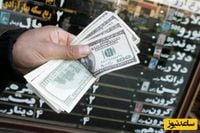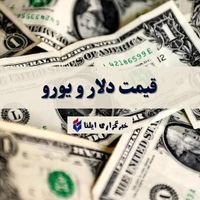The economy of Iran finds itself at a pivotal juncture, particularly when examining the constantly shifting landscape of currency exchange rates. As of March 20, 2025, a deep analysis of the prices for various currencies highlights the significant disparity between market and central bank values, a phenomenon that has a direct bearing on everyday Iranians.
According to اقتصاد 24, the prices of key currencies against the Iranian Rial are strikingly high, with the US Dollar pegged at 977,800 Rials and the Euro at 1,075,800 Rials. Additionally, currencies such as the UAE Dirham and British Pound stand at 268,950 Rials and 1,278,100 Rials respectively. Meanwhile, for those keeping a close tab on international exchange trends, the Turkish Lira, Swiss Franc, and Chinese Yuan are traded at 26,900, 1,121,900, and 136,100 Rials correspondingly. This reveals a complex interplay of factors affecting the Iranian economy, underlining how currency values resonate throughout various sectors.
The situation gets even more intricate when considering the rates determined by the Central Bank of Iran. As reported by ساعدنیوز, the central bank places the Dollar at a rate of 706,637 Rials and the Euro at 771,816 Rials. The discrepancy between the rates set by market forces and those dictated by the central bank raises eyebrows, fostering a critical discussion about exchange rate management in the country.
This gap may impact local businesses significantly, particularly exporters and importers who rely on accurate currency valuations to strategize their pricing and production. The question many are asking is: how will these rates affect companies' bottom lines moving forward? Companies may find themselves either thriving or struggling based on how they navigate these fluctuations.
Other currencies also display varying exchange rates against the Rial. The Japanese Yen, for instance, holds a value at 658,100 Rials, whereas the South Korean Won remains lower at just 680 Rials. The Canadian Dollar is trading at 690,600 Rials, and the Australian Dollar at 625,400 Rials, while the New Zealand Dollar stands at 571,800 Rials. This divergence in currency values not only illustrates the complexities but prompts an examination of what this means for consumer purchasing power and inflation rates in the region.
Moreover, reflecting on the potentiality of these currencies offers insight into broader economic conditions. The Iranian economy's reliance on oil exports has historically linked its currency value to global oil prices. As appreciated by regional experts, this reliance can mean that geopolitical tensions or changes in oil prices can cascade through the economy, creating volatility in rates further down the line.
The analysis doesn't stop there; with supplementary currencies like the Indian Rupee at 11,370 Rials and the Pakistan Rupee tapping in at 3,529 Rials, the financial landscape expands even further. As noted, local currencies from Iraq, Syria, and Afghanistan also have specific exchange relationships that highlight varying economic conditions throughout neighboring countries.
A comprehensive review shows the Danish Krone at 144,200 Rials, the Swedish Krone and Norwegian Krone at 98,000 and 93,200 Rials respectively, while the Saudi Riyal and Qatari Riyal stand at 262,680 and 280,600 Rials. Furthermore, the Omani Rial, which is drastically more expensive at 2,556,400 Rials, reflects significant economic strain or policy measures unique to those areas.
In closing, the continual shifts in the exchange rates compel both individual consumers and businesses to rethink how they engage in international commerce. The implications of these prices extend beyond the financial realm; they pose real, everyday questions about affordability and access for the average Iranian as inflation may spiral upwards due to inconsistent currency valuation.


